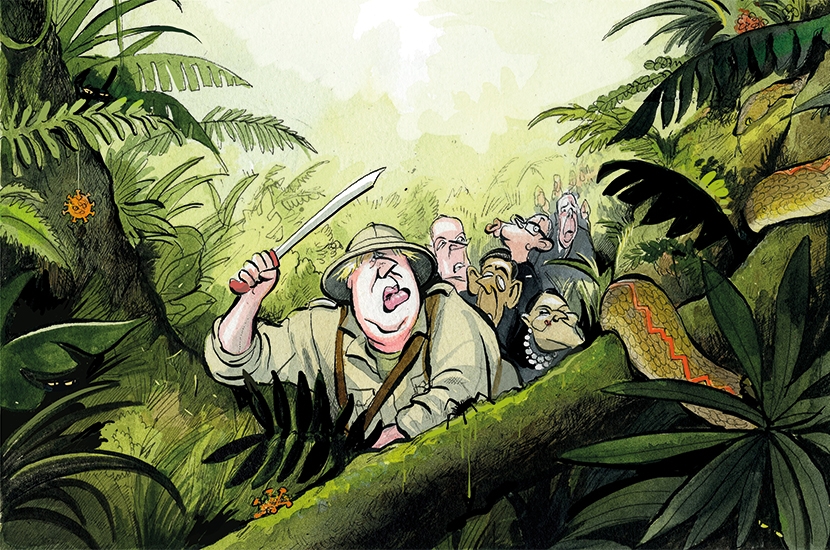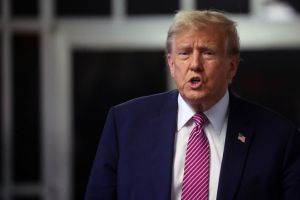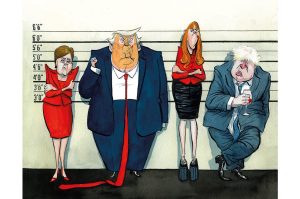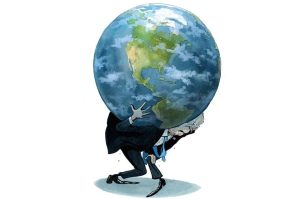Ever since Boris Johnson was admitted to hospital on April 5, the British government has been in a holding pattern. No big decision could be taken without the Prime Minister, but he was in no position to make one. He is now back at work, though, and has a plan for what to do next. Put simply, it is to drive the coronavirus transmission rate — the reproduction number, or ‘R’, which shows the expected number of infections directly generated by one case — down as low as possible and then stay on top of it through a ‘track, trace and test’ approach. In other words, the government is going to go South Korean on the virus.
This raises the question: why wasn’t this the strategy all along? The answer is that the state simply wasn’t capable of doing this earlier in the crisis. The necessary infrastructure did not exist. The UK’s much heralded pandemic plan was designed for flu — not this Sars-style virus. Since Sars had given the world plenty of warning of what a coronavirus outbreak looks like, it’s a pretty striking failure. Asia learned the lesson and reacted accordingly. The bureaucracies of Europe and America, meanwhile, were all set for the return of the Spanish flu. The UK was looking the wrong way for the wrong enemy.
This is the public health equivalent of the fall of Singapore in 1942. Before the Japanese advance, it was believed that any attack on Singapore would come from the sea. The large guns with their armor-piercing shells which defended the harbor would have made it very hard, if not impossible, for any attack of that nature to succeed. But the Japanese came through the jungle instead, leading to what Churchill called ‘the worst disaster and largest capitulation in British history’. That South Korea, Taiwan and Singapore were so much more ready for COVID shows that it doesn’t require hindsight to know that the plans were deficient. The problem, in Britain, was a failure of imagination.
All this will be a matter for the inevitable inquiry. Now is the time to adjust, and fast.
The aim is to force the number of new COVID cases down as much as possible, then try to identify and contain any new outbreaks. But that all depends on knowing when to ease the lockdown. To answer this question, you need data: something that there has simply not been enough of so far.
‘One of the biggest problems we have had is that we have been blind through this whole thing,’ one of those at the heart of decision-making says. I am told that this was painfully obvious during the last decision on whether to extend the lockdown. ‘Ministers were asking where the “R” was, and there was no certainty about where it was,’ says one participant. The best that could be offered was a range between 0.5 and one — problematic since a country would want a very different response depending on whether the real figure was at the higher or lower end of that range.
The hope in Whitehall is that more clarity is on the way. The Office for National Statistics is undertaking a mass random testing program that should provide the government with regular data on how many COVID cases there are and which demographics are particularly at risk. Armed with this information, they will no longer be flying blind and can begin formulating policy. Ministers will have the first results from this new survey in the coming days.
The bad news is that this approach means that next week’s review of the lockdown will lead only to the mildest of easing. I am told that what relaxation there will be will mostly concern outdoor activities. (Though it is worth remembering that there is more flex in the current guidelines than is generally realized. Anyone can go to work, for instance, if they can’t work from home.) Schools in England are likely not to return until after half-term. Next week’s review will, according to one of those involved, be about a ‘timeline for when we can do things’ rather than an opportunity to do them straight away.
A longer lockdown means an even smaller economy. The British government, though, hopes that caution now will allow a faster recovery later. One of those involved in drawing up the policy defends it on the basis that ‘by holding firm, it allows you to do more later’.
In Johnson’s ‘back to work’ speech in Downing Street, there was a hint of where things are heading. He said that he understood businesses’ worries but that the danger was that if restrictions were eased now ‘we would be forced once again to slam on the brakes across the whole country and the whole economy and reimpose restrictions in such a way as to do more and lasting damage’.
His use of the phrase ‘the whole country’ was revealing. I understand that the hope in government is that their new method will allow them to take a highly localized approach. So, for example, if Bristol became a virus hotspot, testing could begin on a large scale and an army of contact-tracers could be deployed. Until the outbreak was contained, schools and non-essential retail in Bristol could be closed while the rest of the country continued as normal. Such an approach offers far more flexibility than the sledgehammer of a national lockdown — and means that the economic damage is far more limited. This is important, because trying to force the virus into reverse is an incredibly delicate operation. Just look at how Germany is having to consider re-imposing restrictions because its R number is now back up to one.
Ending lockdown will not be a smooth, one-way, nationwide process. ‘We’re not going to be able to make a transition which is A to B,’ says a Downing Street source. It’s likely to come in stages, with a few strategic reversals when needed. The key decisions will be what to relax when and where.
One of those involved in these decisions admits that ‘it is very hard to imagine that we are going to start bringing [restrictions] off and then not have to bring some things back’. Everything points to a very gradual easing of the lockdown. Given that Tory MPs want to see a substantial relaxation of it (as do most of the cabinet), it will take all of Johnson’s skills as a communicator to persuade his party to accept a slower timetable. One of the Prime Minister’s confidants warns that in Westminster ‘people are too optimistic about how much can change, how quickly’.
Tory MPs who spend a lot of their time fielding calls from local businesses which can’t survive much longer are keen for things to get back to close to normal as quickly as possible. But public opinion is still pro-lockdown. Only a quarter of people think the economy should be restarted if the virus is not contained. More than 70 percent say they’ll be nervous about leaving their house even once the restrictions are lifted. In Northern Ireland, the executive has decided not to reopen schools until September at the earliest, because it has calculated that 90 percent of parents simply wouldn’t send their children back before that. In England, around 20 percent of pupils are eligible to go to school as the family of key workers, yet fewer than two percent are in class.
In a further sign that things won’t get back to normal any time soon, there is deep skepticism in Whitehall that any large indoor events will be possible before Christmas. The view is that ‘social distancing is here to stay’. If that is the case, many pre-corona businesses will no longer be viable. In these circumstances, a V-shaped economic recovery is highly unlikely.
At the same time as the economy has begun to shrink, the demands on the state have grown. Early thinking in medical circles is that one of the reasons Germany and various Asian states have had a lower number of deaths is that they have got patients into hospital earlier, and they were able to do that because of spare capacity. This points to the government having to build redundancy into the health service, and that is going to be expensive.
Another change is the shift to what Johnson calls ‘national self-sufficiency’ in medical matters. In Downing Street, the view is that Britain cannot afford to be dependent on imports for vital medical equipment. I am told there will be a ‘huge new push for domestic manufacturing’ after this crisis to ensure that the UK can produce drugs, vaccines and medical equipment when necessary.
This is not just about making the UK less dependent on China. This crisis has revealed that in an emergency, nation states move to protect their own. Just look at the number of countries — including several EU members — that at certain points during the past few months have banned the export of vital kit. Even when the immediate crisis is over, this will still be a problem. For instance, if a US firm were to come up with a coronavirus vaccine, President Trump could — under the Defense Production Act — stop it from being exported until there were sufficient doses for America’s own needs. The formula may be shared with the world, but that will be of no use to Britain when at present it lacks the pharmaceutical infrastructure needed to make its own vaccines.
Even before coronavirus, the British government’s agenda was large and ambitious — some would have said unfeasibly so. It is now even greater. It wants to respond to coronavirus by creating an entire new public health infrastructure, one that can ensure that the UK is never again caught out in the way it has been by this virus. Its aim would be to make sure that in any future pandemic, the UK can deploy a South Korean response from the off, leading to far fewer deaths. Creating this infrastructure will be expensive. But given that COVID is the third coronavirus crisis since the turn of the century (Sars and Mers being the other two) and given the catastrophic costs of the current nationwide lockdown, it’s sensible to insure against a fourth.
One might think that Covid could have supplanted the Prime Minister’s other ambitions. But one of those who knows him best says that ‘Boris is a “have your cake and eat it” man. He isn’t going to want to give up any of his plans.’ Indeed, his political allies have already begun to think about how the desire to revive domestic manufacturing combines with his leveling-up agenda.
At the next election in 2024, Johnson will be judged on how he handled the recovery. If by going slowly now, he creates the space to move steadily towards a return to something approaching normality, then his approach will have been justified. But if the slow pace leads to deeper and deeper economic scarring while other countries make a more rapid recovery, then voters will take a dimmer view.
Johnson has chosen his route out of the coronavirus jungle. His premiership and the UK’s future health and prosperity will turn on whether it is the right one or not.
This article was originally published in
The Spectator’s UK magazine. Subscribe to the US edition here.


















